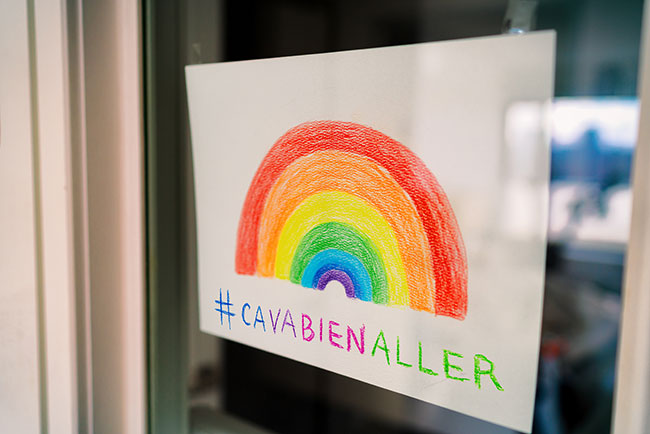
How to toss social rejection and move on during challenging times
By Bill Howatt
By Bill Howatt
EDITOR’S NOTE: ‘Mental Fitness: The next frontier in workplace mental health’ is a weekly series, in partnership with Dr. Bill Howatt of Howatt HR Consulting in Ottawa. This series takes a deeper look at mental fitness — an approach to prevent mental harm and promote mental health.
“There is no bigger joy than a loving relationship. There is no bigger pain than the loss of one. Can’t get one if you do not risk two.” — Dr. Bill Howatt, author of The Cure for Loneliness
I once said during a keynote address: “We humans can struggle with social connections because of a design flaw.”
I went on to explain that many of our day-to-day decisions are cognitive, but defining safe personal and professional social connections depends on emotional decision-making.
What percentage of social connections end over one stressful event?
Replay a personal experience. Typically, one person starts the conversation emotionally charged with their version of the facts.
The receiver being confronted may quickly disagree, but due to emotional overload and reacting with their caveman brain, fire up their defences.
When both parties’ emotions go up, it is normal for their cognitive intellect to go down, resulting in one or both parties making knee-jerk decisions.
A cognitive decision would be objective rather than reactive. The history of the social connection has been 89.9 per cent OK, with just over 10 per cent less optimal.
Practically speaking, there is less chance of making a knee-jerk decision when we move from our emotional brain to our cognitive brain.

Tossing social rejection starts with accepting it. Wishing it away will not change the situation. (Maridav/Adobe Stock)
One trick is to allow time to cool down. Take a piece of paper and complete an objective inventory of value alignment, desirable attributes, and positive experiences. This can help ensure any decision is made on facts, versus one behaviour or moment in time.
The human design flaw is to expect perfection in difficult moments. Because of our caveman brain — especially with COVID-19 and all the extra drains we are dealing with — we are all going to make mistakes, and when confronted may not be able to respond the way we wish we could.
Also, the person who is upset may not have the capacity to process or think differently with their emotional brain.
The fallout can be strong personal or professional social connections getting broken, leaving one or both parties feeling rejected. Some social connections can be repaired; others are never resolved, because of a lack of desire.
This microskill is for tossing rejection and moving on during challenging times, as we can only control our own behaviour.
Why this microskill matters
Researchers have found that rejection can impact a person in many ways:
- When not managed, it can increase the risk of anger, anxiety, depression, jealousy, and sadness.
- It can negatively impact a person’s ability to concentrate.
- It may increase the risk of poor impulse control.
- The pain of social rejection is like that of a physical injury.
Tips for tossing rejection
Tossing social rejection starts with accepting it. Wishing it away will not change the situation.
When your emotions are hurt, the only healthy path forward is allowing time for feelings to heal.
However, there are things you can do to help move through rejection in a healthy and proactive way:
- Focus on your top five attributes: Rejection can feel like a blow to your self-esteem. To strengthen your resolve to move through rejection, name what you believe are your top five attributes (for example: kindness, generosity, loyalty). Write them out and read them aloud when you wake up each morning and before you go to bed at night.
- Validate your feelings: It is normal to experience waves of emotional discomfort after being socially rejected. Acknowledge the emotional waves as they come in. There is no need to fight them. Over time, their frequency, intensity and duration will decrease as your brain accepts that the social connection is gone for now.
- Look for the learnings: It takes two to have a meaningful social connection. Whether you saw the potential rejection coming, often there is an opportunity to learn from social connection failure when you open yourself to an opportunity that can help in a future challenge or perhaps this one, in the event things work out over time.
- Keep things in context: You get to pick who you want to be around and so does the other person. Also, it may not all be about you; sometimes there are other things at play. Avoid the urge to overreact or to try to hurt them back. Take the humble road.
- Stop negative self-talk fast: Nowhere does it say being negative about yourself will help you get through rejection. As random, negative thoughts jump in, accept that this is your unconscious brain looking for the why, nothing more. Push away the negative thoughts and install a non-judgmental thought: “They made a choice.”
 Dr. Bill Howatt is the Ottawa-based president of Howatt HR Consulting and the former Chief of Research and Workforce Productivity at The Conference Board of Canada.
Dr. Bill Howatt is the Ottawa-based president of Howatt HR Consulting and the former Chief of Research and Workforce Productivity at The Conference Board of Canada.